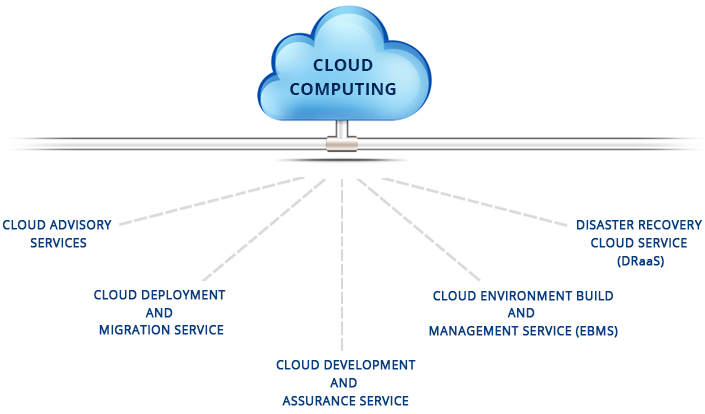Why Pick LinkDaddy Cloud Services: Advantages and Attributes Clarified
Achieve Seamless Scalability With Cloud Solutions
In the ever-evolving landscape of cloud services, achieving seamless scalability stands as a foundation for modern-day businesses seeking to stay competitive and adaptable. The ability to easily increase or contract sources in response to transforming demands is a critical benefit in today's busy electronic setting. By mastering the art of scalable cloud remedies, companies can not just optimize efficiency and simplify procedures however additionally pave the means for future growth and development. The pursuit for smooth scalability with cloud services unveils a globe of opportunities for those ready to accept the transformative power of vibrant resource monitoring.
Advantages of Cloud Scalability
Cloud scalability offers companies the adaptability to dynamically change resources based on need, making certain optimal performance and expense effectiveness. Furthermore, cloud scalability promotes technology and trial and error by enabling businesses to easily check new concepts and scale them as needed. Ultimately, the benefits of cloud scalability prolong beyond expense financial savings to incorporate enhanced performance, dexterity, and advancement.
Key Attributes for Scaling
Effective scaling in cloud services depends on essential features that enable companies to readjust sources dynamically based upon demand. One necessary function for scaling is flexibility, enabling resources to scale up or down in feedback to fluctuating workloads. This makes certain that organizations can fulfill performance needs without over-provisioning resources. One more vital feature is scalability, making it possible for systems to manage raised workload by adding sources perfectly. This attribute is critical for suiting growth without jeopardizing performance. Furthermore, automation plays an important duty in scaling by automating the provisioning and de-provisioning of resources based upon predefined policies. Automation reduces human treatment, improves effectiveness, and makes certain quick action to changing demands. Monitoring and analytics tools are also necessary for scaling, providing insights right into resource utilization, performance metrics, and prospective bottlenecks. These tools allow companies to optimize and make enlightened decisions source appropriation for effective scaling. On the whole, these vital functions collectively encourage organizations to accomplish smooth scalability in cloud services.
Implementing Auto-Scaling Approaches
To efficiently optimize source allocation and adjust to varying workloads, companies should strategically carry out auto-scaling strategies in their cloud services framework. Auto-scaling enables systems to immediately change the variety of calculate resources based on real-time need. There are various auto-scaling techniques that companies can utilize, such as predictive scaling, which utilizes historical information to forecast future resource needs, and responsive scaling, which reacts to existing work changes.

Ideal Practices for Scalability
For companies aiming to enhance their scalability in cloud solutions, executing finest methods is important for optimum performance and source administration. One key finest practice is designing applications with a microservices style. This technique breaks down applications into smaller sized, independent solutions that can be deployed, upgraded, and scaled individually, permitting better flexibility and scalability.
Another helpful resources important technique is utilizing containerization modern technology, such as Docker or Kubernetes. Containers make it possible for the product packaging of applications and their reliances right into isolated systems, making it easier to scale components individually and release them consistently across various atmospheres.
Furthermore, implementing automated implementation and infrastructure as code (IaC) can simplify scalability efforts (linkdaddy cloud services). Automation devices like Terraform or Ansible assistance in provisioning and managing sources effectively, decreasing hand-operated mistakes and making it possible for quick scalability
Moreover, keeping track of efficiency metrics, establishing notifies, and carrying out normal capacity planning are important methods to ensure aggressive scalability administration. By sticking to these finest methods, organizations can accomplish seamless scalability in their cloud services while this link optimizing efficiency and resource utilization.
Surveillance Efficiency Metrics
When assessing the effectiveness of cloud services scalability, carefully checking efficiency metrics is vital for making certain optimum capability and source allocation. By continuously tracking key performance signs (KPIs) such as feedback times, latency, source, and throughput application, companies can gain valuable understandings into the wellness and efficiency of their cloud facilities. Monitoring efficiency metrics permits the early detection of prospective bottlenecks or issues that can affect scalability, enabling positive procedures to be required to resolve them before they intensify.

Final Thought
To conclude, accomplishing seamless scalability with cloud services is important for companies to optimize efficiency, improve development, and maintain high efficiency degrees during peak times. By leveraging the advantages of cloud scalability, implementing auto-scaling read more methods, using vital features such as flexibility and automation, and adhering to finest methods like application layout and efficiency tracking, businesses can successfully scale their systems while taking full advantage of source application and performance.
The pursuit for smooth scalability with cloud solutions reveals a world of possibilities for those prepared to embrace the transformative power of dynamic resource management.
Cloud scalability provides organizations the flexibility to dynamically adjust resources based on demand, making certain ideal efficiency and cost performance. One more key function is scalability, making it possible for systems to deal with raised workload by including resources flawlessly.For organizations intending to enhance their scalability in cloud solutions, executing ideal methods is important for optimal efficiency and source monitoring.When examining the performance of cloud services scalability, carefully monitoring efficiency metrics is essential for guaranteeing optimal performance and source allowance.